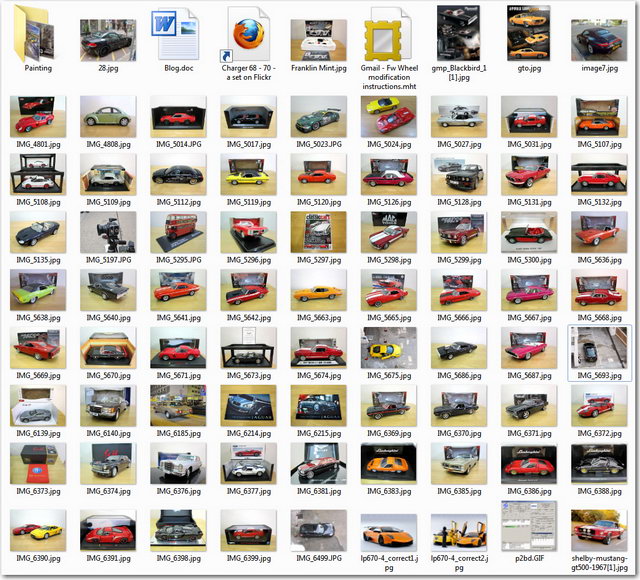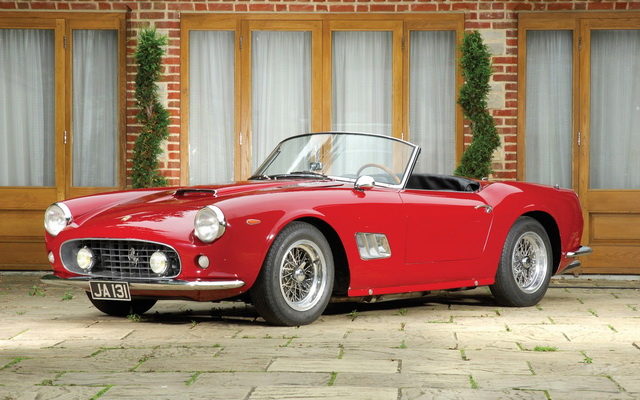自己並不是德國車的發燒友,因為總覺得日耳曼人設計的東西跟這個民族一樣死板。但是凡事總會有例外的,如奔馳的W196R、Pullman長陣、300SL這些皆是流芳百世的經典!
對于徽章上有匹奔馬,但外型其實更像一只”青蛙”的Porsche來說,自己喜歡它的超級跑車959、928S和911系列。如果深入保時捷歷年最暢銷的911系列,自己最喜歡的型號首選993,然後到第一代60年代的901,接著是997、964,最後才是那難看的996。如果講款式的話,那麼一定是這個次序無疑: Turbo > Carrera > Targa。
UT Porsche 993系列是車模界公認車型做得最貼近真車的”極品”,我2年前已經陸續收藏到了4款UT 993,分別是銀色開篷版的911 cabriolet、棗紅色的911 Carrera S、棗紅色的911 Turbo及青色的911 Coupe (Carrera)。但內心其實最惦掛著的還是那經典的銀色系列,無奈本地拍賣場近5年都完全不見任何蹤影,另外國際拍賣場的價格也一直居高不下,更屢創新高,猶如香港的樓市一樣如脫韁野馬般瘋狂。
這次的緣份來得真巧,這3台銀色的UT 993開始的頭3天幾乎無人問津,難道新一代的收藏家們都不知道這堆寶物的真正價值嗎﹖就Carrera來講,我發現自己更喜歡沒S的Carrera,因為腰線和前臉來得比較簡洁和優雅,所以一見到這回有初版的銀色Carrera,馬上大喜!
在交易過程中我更了解到了原來這位和我年紀相當的賣家10年前竟然在我剛去過的溫哥華那間車模店Metrotown Autoworld打過工,也就是他介紹老板開始賣UT、AA的。後來更跟他談起Wilkinson這件歷史悠久的車模店,他印象中Wilkinson賣的車是最貴的,但我告訴他最新情況現在Autoworld的價格反而要比Wilkinson貴上一倍有多了,看來Autoworld的老闆根本”不憂做”,因為他以前是代理京商遙控模型的,一早就已經賺夠上岸了。
這匹珍貴的文物是他2002年回流時帶回香港的,一點問題也沒有,漆面光滑如鏡、最討厭車輪油漆融化的問題完全不存在。到底說怎麼都有10年了,看來賣家挺喜歡這3台同色的UT 993,保持得跟全新的一樣真不容易啊,希望這回千萬不要蹧蹋在我的手上。
至於他為什麼肯割愛,說到底這些也曾是他的心愛之一。據他所說因為上星期買了台1:1的銀色NSX(其中還有很多有趣的故事,聽完後,大開眼界!),LP一定要他賣掉那些玩具和車模才准許他買NSX。其實類似的車模朋友放車的故事經常接觸到,大部份是因為有了小朋友的緣故,所以車模也就無奈地”被逼遷了”。
交收的當晚,大家話題投機,幾乎談了近1個鐘頭,最後這個新認識的朋友還給了我大特價:$400一台,另外更加免費贈送了一台絕版的Guiloy Aston Martin DB7英國綠給我,實在太感激了。
這次可真是個千載難逢一箭3雕的機會啊!從中更結識到了一位談得來的車模朋友。這絕對是緣份,我上個月才剛去過游玩的城市,竟然回來不足一個月撞到了這個曾經在那個城市車模店工作過的車友。
總覺得收藏這回事,緣份佔了極大部份,所以當機會出現的時候,就要好好把握才是! 還是那句”是你的跑不掉,不是你的、強求也沒用!” 現在只差GT2 (很可能下星期有),我993銀色艦隊就全收齊了。
所以我說緣份這東西: Somehow, we are all CONNECTED!
1/18 UT Porsche 911 (993) Turbo, Silver

1/18 UT Porsche 911 (993) Carrera Targa, Silver

1/18 UT Porsche 911 (993) Coupe (Carrera), Silver




